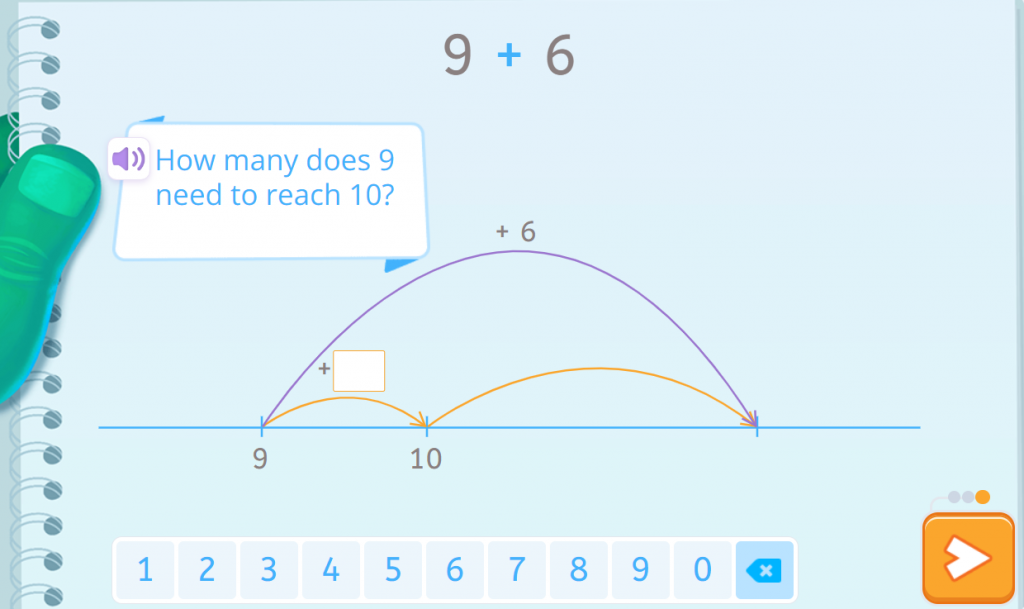Do you know what priming activities are? At Smartick we call them warm-up or activation activities. In this post, we will explain more about them and their benefits for learning.
Index
What Is Priming?
Cognitive priming is a phenomenon in which prior exposure to one stimulus influences the subsequent response to another related stimulus. This effect occurs even when the subject is unaware of the influence of the primary stimulus on his or her response.
Cognitive priming thus refers to the use of prior stimuli to influence subsequent information processing.
Priming activities refer to a psychological procedure in which a person is exposed to a prior stimulus for the purpose of influencing his or her subsequent response or perception toward a related stimulus. The main objective is to simulate a person’s mind in relation to certain concepts, ideas or memories in order to influence his or her cognitive processing and behavior. In practical terms, priming involves putting forth a signal, image, word or any other stimulus for it to have an effect on subsequent cognitive processing. This stimulus can be of different types, such as words, images, sounds or even scents.
The theory behind these activities suggests that exposing people to certain stimuli activates mental associations in their memory, making it easier to access and retrieve related information later on. For example, if someone is shown the color yellow, they are more likely to say yellow fruits such as banana, lemon or pineapple when asked to name a fruit.

There are also several cognitive training activities that can be used as cognitive priming to facilitate the processing of subsequent stimuli and improve performance. For example, attention activities can be used as priming to improve concentration and efficiency in subsequent tasks. In fact, in a study by Wexler et al. 2016 it has been shown that by doing a 5-minute session of cognitive training with video games before doing some computerized mathematics curricular content learning games improved performance on the curricular content games. Cognitive training games similar to the activities included in SmartickBrain were used in this study.
Benefits of Priming
A priming activity can provide several benefits in the learning process, namely:
- Improved information retention: By exposing learners to relevant concepts or information prior to a learning task, associated cognitive networks are activated, making it easier to encode and retrieve related information later.
- Increased cognitive fluency: Priming can increase cognitive fluency. For example, some attention games can act as a cognitive priming when preparing and focusing one’s attention prior to performing a more complex cognitive task.
- Facilitates knowledge transfer: Priming can help facilitate the transfer of knowledge and skills to new or different situations.
- Stimulating motivation and interest: Priming can arouse learners’ motivation and interest in a learning topic or task. By exposing learners to positive or emotionally engaging related stimuli prior to the learning activity, their curiosity and enthusiasm can be aroused.
Priming in Smartick
In Smartick priming activities appear at the beginning of the session as a warm-up activity. It is an activity that lasts no more than 1 minute and has been designed with 2 objectives:
- Objective 1. Stimulate children’s attention to help them focus before completing their math session. Here’s an example of a priming activity in Smartick where you have to choose the letter p:
- Objective 2. Stimulate the mind in content related to the exercises that will be seen in the mathematics session. Let’s take a look at another example of priming activities in Smartick, now we have to choose the values that add up to ten:
The activity in the video above appears before working on units such as the steps to 10, because it allows the children to warm up for what they will be working on later. If they have reviewed with the priming activity the decompositions of the 10, they will find it easier to do these types of exercises:

In Smartick, children from 4 to 14 years old can learn math on a daily basis with 15-minute sessions. Sign up and enjoy the free trial period. After doing the daily session you can access the Virtual World to compete with other Smartick kids, customize your avatar, practice cognitive training with more than 20 games and many more free to discover when you enter Smartick.
References
- Wexler, B. E., Iseli, M., Leon, S., Zaggle, W., Rush, C., Goodman, A., Imal, A. E., & Bo, E. (2016). Cognitive Priming and Cognitive Training: Immediate and Far Transfer to Academic Skills in Children. Scientific Reports, 6(1). https://doi.org/10.1038/srep32859. https://doi.org/10.1038/srep32859
Learn More:
- Attention Games: The Key to Fostering Sustained Concentration in Children
- Searching for Fun Activities for Your Kids This Summer?
- Attention and Learning with SmartickBrain
- Cognitive Flexibility Games with SmartickBrain
- Lost Objects: The New SmartickBrain Game to Train Attention







